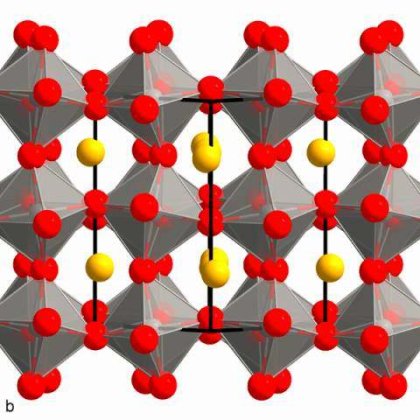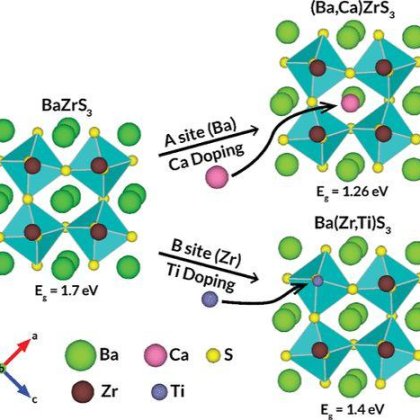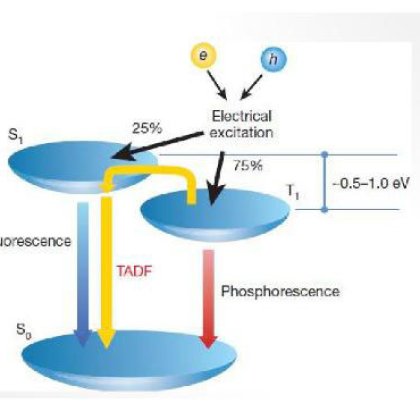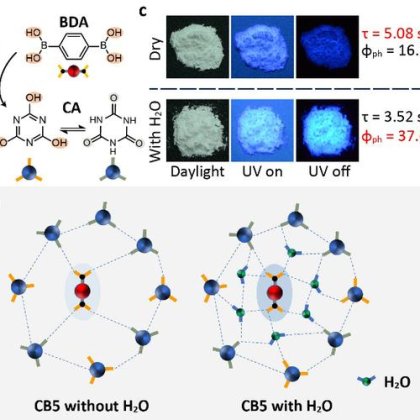Cesium lead chlorine bromine
Purity: ≥99.0%
Synonyms: CsPbClBr2 Perovskite
CAS number: /
Molecular formula: Br2ClCsPb
Molecular weight: 535.36
efficient blue light,CsPbClBr2
Rapid synthesis of highly stable all-inorganic perovskite nanocrystals exhibiting strong blue luminescence
Xun, Jiao; Deng, Jidong; Shen, Wei; Li, Ming; He, Rongxing [Journal of Alloys and Compounds, 2021, vol. 872, art. no. 159612]
Abstract
With the development of blue-emitting all-inorganic Pb-based perovskite nanocrystals (NCs), the perovskite family (e.g., CsPbCl3−xBrx NCs) has drawn researchers’ attention. Although the hot injection method has been widely used to fabricate blue-emitting perovskite NCs, this synthesis method generally needs an inert gas atmosphere, high temperature, and localized injection operation, leading to high cost and limiting the applications of perovskite NCs. Herein, we synthesized mixed-halide blue-emitting CsPbCl3−xBrx (x = 0.0–2.5) perovskite NCs rapidly at room temperature. The as-prepared perovskite NCs exhibited excellent stability and high photoluminescence quantum yields up to 89% because of their low non-radiative recombination rate. The photoluminescence wavelength of the NCs was precisely regulated across the whole visible region (406–488 nm). Importantly, this facile method to synthesize perovskite NCs not only requires mild experimental conditions, dramatically lowering the cost of synthesis, but also provides a feasible route for the industrial production of efficient blue-emitting devices.
Dimensionality Control of Inorganic and Hybrid Perovskite Nanocrystals by Reaction Temperature: From No-Confinement to 3D and 1D Quantum Confinement
García-Lojo, Daniel; Otero-Martínez, Clara; Pérez-Juste, Jorge; Pastoriza-Santos, Isabel; Polavarapu, Lakshminarayana [Angewandte Chemie - International Edition, 2021, vol. 60, # 51, p. 26677 - 26684][Angew. Chem., 2021, vol. 133, # 51, p. 26881 - 26888]Abstract
This work focuses on the systematic investigation of the shape, size, and composition-controlled synthesis of perovskite nanocrystals (NCs) under inert gas-free conditions and using pre-synthesized precursor stock solutions. In the case of CsPbBr3 NCs, we find that the lowering of reaction temperature from ∼175 to 100 °C initially leads to a change of morphology from bulk-like 3D nanocubes to 0D nanocubes with 3D-quantum confinement, while at temperatures below 100 °C the reaction yields 2D nanoplatelets (NPls) with 1D-quantum confinement. However, to our surprise, at higher temperatures (∼215 °C), the reaction yields CsPbBr3 hexapod NCs, which have been rarely reported. The synthesis is scalable, and their halide composition is tunable by simply using different combinations of precursor solutions. The versatility of the synthesis is demonstrated by applying it to relatively less explored shape-controlled synthesis of FAPbBr3 NCs. Despite the synthesis carried out in the air, both the inorganic and hybrid perovskite NCs exhibit nearly-narrow emission without applying any size-selective separation, and it is precisely tunable by controlling the reaction temperature.
Triplet Energy Transfer from CsPbBr3 Nanocrystals Enabled by Quantum Confinement
Luo, Xiao; Lai, Runchen; Li, Yulu; Han, Yaoyao; Liang, Guijie; Liu, Xue; Ding, Tao; Wang, Junhui; Wu, Kaifeng [Journal of the American Chemical Society, 2019, vol. 141, # 10, p. 4186 - 4190]Abstract CsPbClBr2
The spectral properties of lead halide perovskite nanocrystals (NCs) can be engineered by tuning either their sizes via the quantum confinement effect or their compositions using anion and/or cation exchange. To date, the latter is more frequently adopted, primarily because of the ease of ion exchange for lead halide perovskites, making the quantum confinement effect seemingly redundant for perovskite NCs. Here we report that quantum confinement is required for triplet energy transfer (TET) from perovskite NCs to polycyclic aromatic hydrocarbons (PAHs). Static and transient spectroscopy measurements on CsPbBr3 NC-pyrene hybrids showed that efficient TET occurred only for small-sized, quantum-confined CsPbBr3 NCs. The influences of the size-dependent driving force and spectral overlap on the TET rate were found to be negligible. Instead, the TET rate scaled linearly with carrier probability density at the NC surface, consistent with a Dexter-type TET mechanism requiring wave function exchange between the NC donors and pyrene acceptors. Efficient TET funnels the excitation energy generated in strongly light-absorbing perovskite NCs into long-lived triplets in PAHs, which may find broad applications such as photon upconversion and photoredox catalysis.
| Characteristic 1 | Cl |
| Characteristic 2 | Pb |













